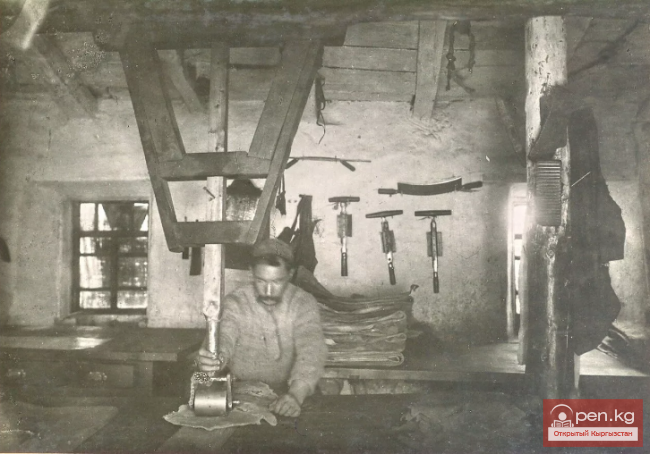THE CITY OF PISHPEK
In 1866, the first Russian settlers began to arrive at the ruins of the Kokand fortress. By 1870, up to 50 Russian families had settled in Pishpek. In 1870, a road to Verny and Lake Issyk-Kul passed by the fortress. A horse postal station was organized.
Thus began the city.
On April 26, 1878, by the decision of the Turkestan Governor-General K. P. Kaufman, the settlement of Pishpek was transformed into a city, initially the center of the Tokmak County, and later the Pishpek County.
The first city construction plan was approved by the military governor of the Semirechye region G. A. Kolpakovsky on August 31, 1878. The plan represented a rectangular grid of streets running from south to north and from east to west, divided into blocks, each containing from 2 to 4 estates.
In 1881, the initial plan was slightly modified. It included designated areas for squares, markets, cemeteries, parks, etc. In the center of the city, there was a square with a church. To the west, the military parade ground was adjacent to the center, and to the east was the merchant's inn. Around this center, residential houses were built for officials, officers, and merchants. On the eastern outskirts, places were allocated for the market and hay square. Initially, the area of the city encompassed the territory within the following boundaries: to the north - Tashkent Street, to the east - the Alamedin River, to the south - Lagernaya Street, and to the west - Kazarmennaya Street.
In 1897, the city had a population of 6,115 people. Among them were: Russians, Ukrainians, and Belarusians - 2,870, Uzbeks - 1,215, Kyrgyz - 666, Tatars - 271; residents of other nationalities - 97 people. According to the information from the city elder of Pishpek, I. F. Terentyev, there were 752 houses in the city, including: "...made of adobe and clay under a reed roof - 728, wooden, under an iron roof - 7, stone, under an iron roof - 6".
Seven years later, in 1904, Pishpek had 38 streets and 24 alleys, 1,417 buildings, of which wooden - 54, wattle and daub - 71, brick and adobe - 1,292 covered with iron - 19, with shingles - 4, reed and Sart method - 1,384.
Here is how the city was described in the "Siberian Trade and Industrial Yearbook" for 1914-1915: "Pishpek became a county town in 1878 when all government institutions were transferred here from Tokmak... Due to its... advantageous location in the center of the fertile Chui Valley, at the junction of the roads to the cities of Verny and Semipalatinsk on one side, and to Tokmak, Przhevalsk, Naryn, and Kashgar on the other side. The city of Pishpek undoubtedly has a tremendous future...
Pishpek constantly attracts new residents - settlers from Russia, Sart from Fergana, and settled nomadic Kyrgyz; as a result, the population is growing rapidly. According to the 1897 census, the population counted - 6,000 people - now it numbers more than 11,700 souls of both sexes.
There are 3 Orthodox churches in the city, and one chapel in the cemetery, 20 Muslim mosques and prayer houses.
The city has 25 longitudinal streets, 14 transverse streets, and 6 squares. The most central streets are: Boulevardnaya, Pushchinskaya, Bazarovaya, Vasilievskaya, and Tashkent; the most important squares are Sennaya and Yarmarochnaya. The city has a reception room, a resettlement hospital, a military infirmary, and a county reception room. Educational institutions include: a men's gymnasium, a 3-class men's city school, a 2-class women's city school, a women's parish school, 3 parish schools, a Russian-native school, an agricultural school, and three Muslim madrasas.
Another excerpt from the book "Russia", vol. XIX, Turkestan region (St. Petersburg, 1913): "The streets are wide and straight, but not paved, houses are partly adobe, partly wooden; in general, the city does not stand out for its amenities.
A notable feature of the city is the public city garden. ...Industry is weakly developed: there are 6 factories (brewery, tannery, mills, etc.) with several dozen workers. Trade is quite significant."
Losev D. S., Kochkunov A. S. What the streets tell.













































